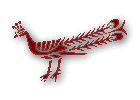 |
|
| ISSN 1084-7553 | |
| IJTS Vol. 2, No. 1 April 1996 |
|
| Editorial Note | |
| Tantra and Dharma... | |
| 1. Introduction | |
| 2. The Nature of... | |
| 3. Description of... | |
| 4. Additions to... | |
| 5. Traveling Kashmiri... | |
| 6. Conclusions... | |
| 7. Cultural Transfer... | |
| Computer Space | |
| New Titles | |
| - Serpentine... | |
| News | |
| Search |
|
| Register |
|
| Create Your Profile | |
| Recover Password | |
| Log In |
|
| Institutional Sub |
|
| none | |
The oldest manuscript of the Krtyakalpataru
| by Michael Witzel |
|
1. Introduction While I was working in the Kesar Library of Nepal in 1976 during my tenure as the local director of the Nepal-German Manuscript Preservation Project (NGMPP), I came across an old palm leaf MS of the niyatakhaNDa of lakSmidhara's kRtyakalpataru (MS no. 417, Kesar Library, Kathmandu, Dept. of Archaeology, His Majesty's Government of Nepal). The MS is written in early Nagari script. The colophon on fol. 333 runs: 1
iti zrI-mahArAjAdhiraja-zrImad-goviMdracaMdra-deva-mahAsAMdhivigrahikena bhaTTa-hRdayadharAtmajena-bhaTTa-zrImal-lakSmIdhareNa viracite kRtyakalpatarau naiyata-khaNDaM samAptaM || XXX || X || XXX || zubham astu lekhakapAThakayoH ||As the colophon tells, Laksmidhara was the minister of the Kanauj king Govindracandra (later half of the 12th cent.) and wrote the stupendous collection 2 on Hindu customs and law on his order; it is one of the earliest compendia preserved and as such, it closely reflects the state of the late pre-Muslim Hindu society of North India.
Though the MS has no date, it is, on paleographical grounds, one of the earliest if not the earliest MSS of this important dharma nibandha text, and it should certainly be studied as such. However, the MS is of great interest for other reasons as well. This has to be explored in some, often technical detail before I can come to more wide-ranging observations (sections 5-7). [This is a preview of the full page; if you are a member of the Asiatica Association and have access to the IJTS, please login using the box on the left menu; non members: please become a member to support the Asiatica Association, and get full access to our publications.] |
|
©1995-2002 Asiatica Association. All Rights Reserved
site development L. Magnocavallo / site comments E. Garzilli |